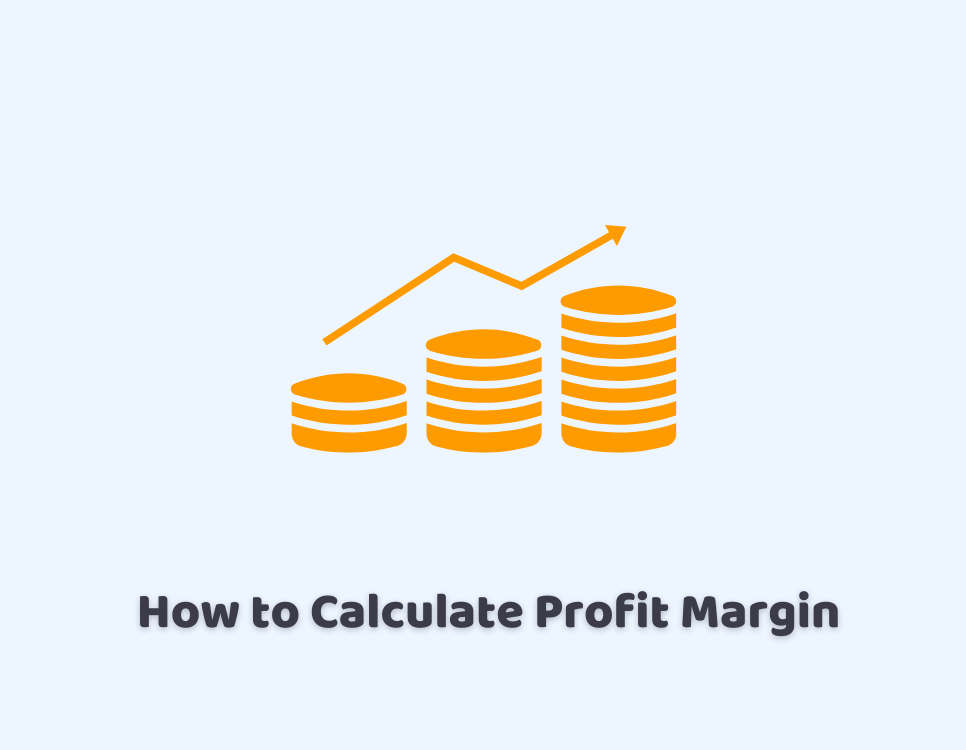
27/04/2022Accounting , Finance
Are you going to analyze the financial health and financial performance of your business and you are advised to calculate the profit margin for this analysis? However, are you struggling to know how to calculate profit margin at the same time?
Don’t worry!!!
As we are going to discuss how to calculate profit margin in more detail in this blog for you, so that you can measure the financial viability of your business. But, let’s break down this topic into the useful information you must know before calculating profit margin.
What is Profit Margin?
Profit margin measures how many pounds have been generated for each unit of product sold in a given period. Moreover, this indicator reflects the financial position of the company relatively. In other words, profit margins are described as percentages or ratios, so you can use this figure to compare with the profit margin of your competitors in the same industrial sector.
Without this financial statistic, no business can analyze the relative position of their business in an industry. You cannot rely on the numbers such as profits alone. Knowing the financial profitability requires you to calculate the profit margin.
For example, you calculate the profit (Revenue – Costs) of your business which gives you a number. This number cannot make a whole picture for you as you cannot decide whether your business is growing is losing market share.
Let’s make it clear with an example!
Example
Suppose there are two companies in a market. Company A is making a profit of £50,000 the same as Company A making. So, how can you decide which company is more profitable than the other? Because it is possible that Company A’s costs are higher than company B’s costs because Company A lacks managerial expertise, etc.
To gauge the relative performance, both companies need to calculate profit margin. Let’s learn how to calculate profit margin!
How to Calculate Profit Margin?
Calculating profit margins doesn’t require the financial managers to dive deep into complex accounting equations and numbers. Instead, they need simply two numbers: Cost & net sales
Profit Margin = Cost/Net sales
Let’s Suppose Company A is manufacturing products at a cost of £50,000 and their sales revenue is £100,000. On the other hand, Company B is producing the same product at a cost of £100,000 and earning £150,000 in net sales. In this case, their profit is equal to £50,000.
However, calculating profit margin will present the actual picture of both companies’ financial position.
Profit Margin of Company A = [Cost/ Net Sales] * 100
= [£50,000/£100,000] * 100
= 0.5 * 100
= 50%
Profit Margin of Company B = Cost/ Net Sales] * 100
= [£100,000/£150,000] * 100
= 0.66 * 100
= 66.67%
So, you can see that Company A is potentially more profitable than Company A. Profit margins have given more clearer picture of their financial performance than other financial indicators.
Get in touch, explain your requirements, or sign up online for customised services just like your business requires.
Why is Profit Margin Important?
Profit margin is essential to learning about the performance of a business. Moreover, financial experts find this indicator more insightful due to the relative nature and strong insight into the cost structure of a business. Moreover, it is one of the viable financial indicators that is widely used to measure the financial health of a firm.
Analyze Relative Market Position
Similarly, if you are an investor and wish to invest in a business by buying the stocks, you can decide by calculating the profit margin of that business. Besides, it helps you compare different companies in the same industry and make a final decision about investing in a potentially profitable business.
Evaluate Managerial Decisions
Moreover, you can judge the managerial expertise of a business by comparing the profits across different companies. It is possible that a product can be manufactured at lower costs, but poor management decisions increase the costs and lower the profit margins.
Cost & Price Decision-making
Lastly, the company managers can cut costs as this profit margin provides insights into the costs of producing more goods. So, if the costs increase on additional products, the manager can look into the costs and lower them to increase the revenues.
On the other hand, he can increase the price to raise the sales revenue. So, we can say that profit margins provide key options to the company managers to accelerate the growth of their company.
Conclusion
Lastly, we can conclude the discussion on how to calculate profit margin by saying that it is one of the most crucial indicators, and without it, no business can move forward. As we have seen that profit margin is a key performance indicator for exploring the actual growth potential of a business, so profit margin makes a huge impact in making a key financially sound decision.
Moreover, we have observed that profit margin helps shape the cost structure into the most favorable structure as business managers can decide on which costs are not viable and are useless liabilities. Besides, the profit margin is preferred over other indicators because it provides a relative position of a company in an industry or sector. So, you can get an edge over your competitors by making decisions that are better than your rival businesses. Finally, you must not get confused about how to calculate profit margin as you have read in detail with strong examples in this article.
Stuck with your accounts and looking for a helping hand? How about you get our guys on a quick call. We love talking about taxes, payroll management and any opportunities that help you expand your prospects. Call us on 02086868876 or email us today.
Disclaimer: The information about How to Calculate Profit Margin provided in this article is general in nature and does not intend to disregard any professional advice.

